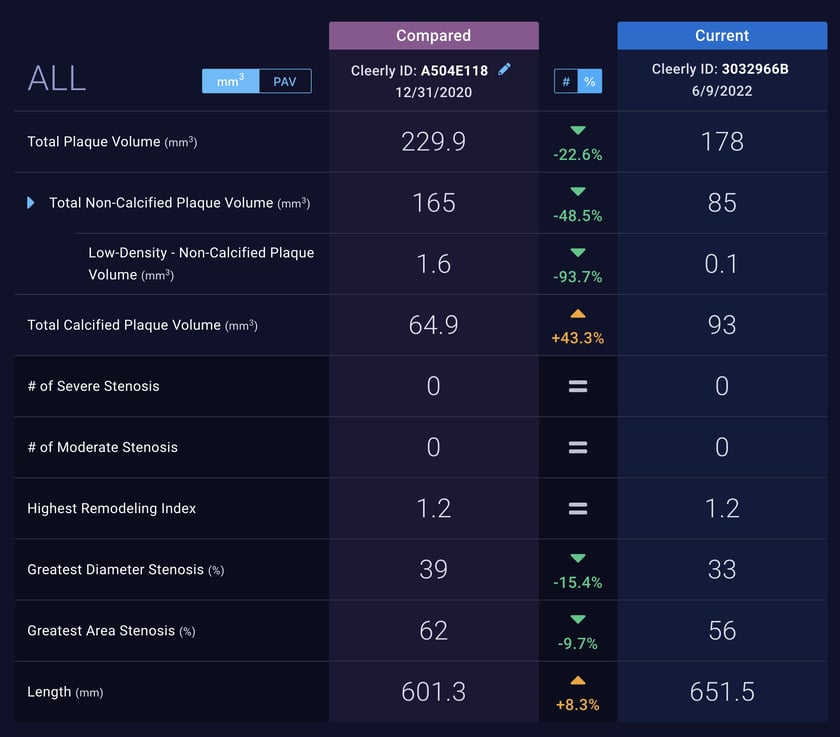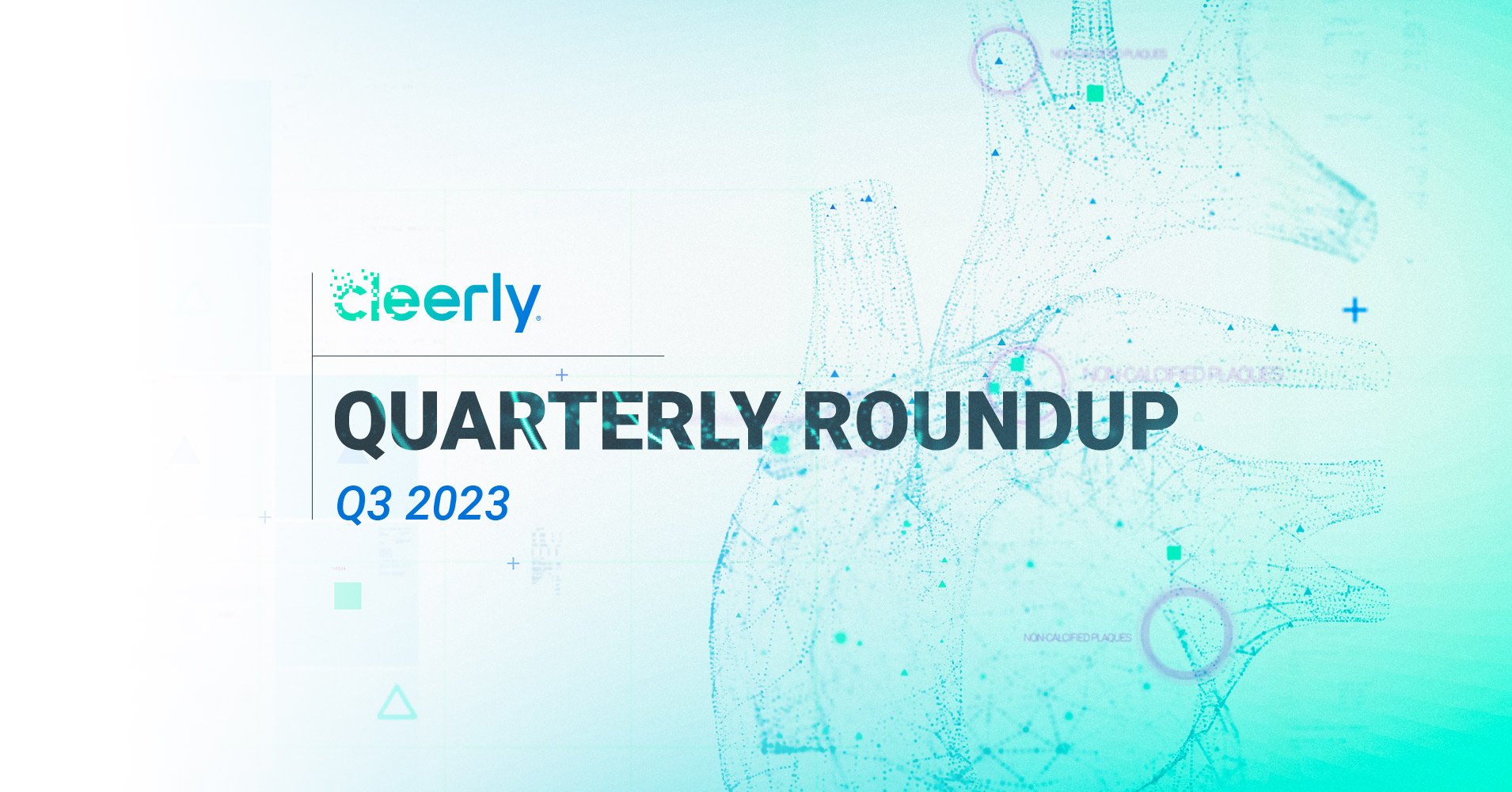The Recipe to a Healthy Heart:Your Guide to Preventing Heart Disease
Sure, the taste of food is important, but do you know how your diet impacts your heart? Many foods contain hidden ingredients that negatively impact...
3 min read
 Cleerly
:
October 18, 2022
Cleerly
:
October 18, 2022

Half of patients who have a heart attack don't show symptoms prior to their event. A new standard of precision care that emphasizes comprehensive evaluation of atherosclerotic plaque for guiding personalized treatment and tracking heart disease over time is changing the traditional approach to heart health.
 Bob has always taken his health seriously. So in 2020, when one of the physicians on his care team recommended a coronary calcium scan, he decided to do it. And when the score came back at 130 – mild to moderate – he took his recommended aspirin and statin and scheduled a coronary CT angiogram (CCTA) scan to follow up.
Bob has always taken his health seriously. So in 2020, when one of the physicians on his care team recommended a coronary calcium scan, he decided to do it. And when the score came back at 130 – mild to moderate – he took his recommended aspirin and statin and scheduled a coronary CT angiogram (CCTA) scan to follow up.
Unfortunately, the statin had side effects, and the CCTA showed the presence of disease: “It was something I needed to pay attention to, but the results of the scan couldn’t tell me anything more specific,” he said.
At that point, two things happened. First, he switched to a new statin. Then, another member of his care team – Dr. Michale Barber of Better Life Carolinas – recommended that he share his CCTA results with Cleerly for a more precise coronary analysis evaluation of the presence, amount, and type of plaque in the heart’s arteries.
Bob’s CCTA exam was uploaded and processed by Cleerly’s software and translated into precision quantitative measurements and easily interpreted reports that gave both Bob and Dr. Barber a much more comprehensive understanding of Bob’s current state of disease. Together they could then use the Cleerly results as a reference for treatment decisions.
A colleague had introduced Dr. Barber to Cleerly several years ago. She saw the value immediately on both a professional and personal level: She has specialized in wellness and healthy aging for more than 20 years, and she lost both her father and her brother to heart conditions.
"Heart disease is still the leading cause of death in the United States. We've obviously been missing something," she said. "If we can see it early and affect change, then it will save lives. That's why Cleerly is a game changer."
The first Cleerly scan, in December 2020, provided the specifics Bob had been looking for. The Cleerly scan showed he had a moderate amount of plaque, but more than 70% of his plaque volume was non-calcified which increases his risk of a future heart attack. In addition, it also showed a small amount of the riskiest type of plaque, low-density, non-calcified plaque– something they both needed to address in decisions regarding his treatment. Increasing non-calcified plaque and low-density non-calcified plaque is prognostic for future major adverse cardiac events, but also something that adjustments in therapy can help to address.

Under Dr. Barber’s direction, Bob increased the dose of his statin, maintained a healthier diet, and kept up his regular physical activity. At his next Cleerly analyzed CCTA scan 18 months later, the low-density volume was down by greater than 95%, and the total volume of non-calcified plaque was down to 42%; a wonderful result which substantially reduces his future cardiac risk. Continued therapy and positive lifestyle changes will hopefully continue to reduce both his plaque and its associated risk even further.
Thanks to the combination of the statin and the lifestyle changes – and not an invasive coronary angiography – Bob had nearly eliminated his low-density plaque.
"It was important for me as a way to prevent an underlying chronic condition and improve my overall health," he said.
For Dr. Barber, Bob’s results highlight Cleerly’s value in helping create individualized care plans. For example, when patients are diagnosed with high cholesterol but have no family history of heart attack or stroke, the normal course of action is to simply put them on medication to lower their cholesterol. But it’s also important to determine whether those patients face an elevated risk of heart disease based on the type and amount of plaque and whether treatment beyond medication or catheterization would be appropriate.
Cleerly benefits these patients in two ways: It shows whether they have a buildup of non-calcified plaque – the true cause of heart disease – and it allows patients and their care teams to see whether they are making progress.
"When you get a Cleerly scan every year, you have a non-invasive way to see how your therapy is working," she said. "I'm a big believer in Cleerly. I love the test, and I think it's a valuable tool for patients."
"When you get a Cleerly scan every year, you have a non-invasive way to see how your therapy is working," she said. "I'm a big believer in Cleerly. I love the test, and I think it's a valuable tool for patients."
Cleerly is expanding to hospitals and clinics across the country to increase access to a new standard of precision heart care. Use our locator tool or contact us to find out if a Cleerly-enabled CCTA imaging location is near you.
References:
Want to learn more about Cleerly?
CONNECT WITH US

Sure, the taste of food is important, but do you know how your diet impacts your heart? Many foods contain hidden ingredients that negatively impact...

As we reach the end of 2023 and yet another remarkable year at Cleerly, it’s a great opportunity to reflect on all we’ve accomplished and begin...

Cleerly has had a busy few months – attending conferences, panel sessions, and winning awards as we all work together to achieve our mission of a...

Half of patients who have a heart attack don't show symptoms prior to their event. A new standard of precision care, emphasizing comprehensive...

"It's very scary because I had a lot of patients and even friends and neighbors that had heart attacks, and we thought they were healthy by eating...

Heart disease is the cause of death for 700,000 Americans1 and nearly 17.9 million people worldwide every year.2 While some of these individuals...